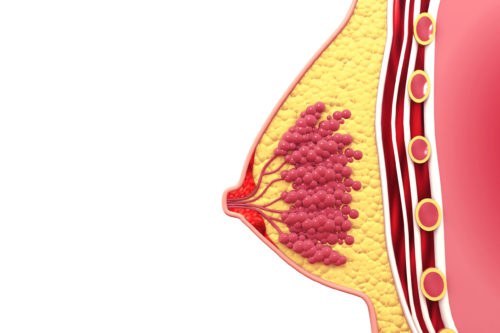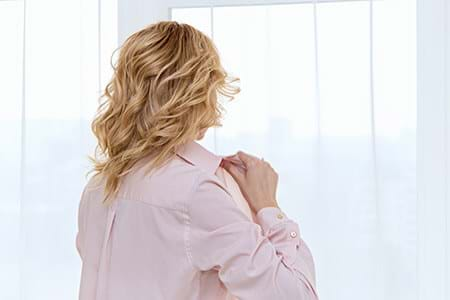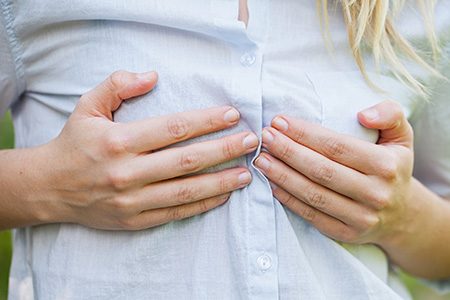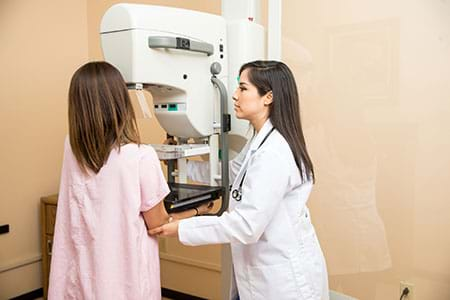Authored by Dr. Sarika Arora, MD
It’s a revelation to many to learn how common breast discharge is in women, not to mention the many different forms it can take — clear, milky-white, greenish, yellowish, brown, sticky, or bloody! And though we’re far from fully understanding the body chemistry that leads to one form of nipple discharge or another, we are aware of a wide spectrum of lifestyle, dietary, environmental and drug factors at play.

Potential causes of breast discharge
Here is a table of causes of breast discharge, some more common, others less common. This is just a partial list of potential influences and not meant to be comprehensive but to give you an idea of how broad the possibilities are.
| COMMON causes of breast discharge | |
|---|---|
| Unknown (idiopathic) | |
| Hormone imbalance | |
| Medications | |
| Antidepressants | monoamine oxidase inhibitors; SSRI’s such as citalopram (Celexa), fluoxetine (Prozac), paroxetine (Paxil), and sertraline (Zoloft); and tricyclics |
| Anxiolytics | alprazolam (Xanax), buspirone (BuSpar) |
| Antihypertensives | atenolol (Tenormin), methyldopa (Aldomet), reserpine (Serpasil), verapamil (Calan) |
| Antipsychotics | phenothiazines (Thorazine, Compazine) |
| Histamine H2 receptor agonists used to treat heartburn and peptic ulcers | cimetidine (Tagamet), famotidine (Pepcid), and ranitidine (Zantac) |
| Synthetic hormones | conjugated estrogen and medroxyprogesterone acetate (Prempro, Premphase); oral and injectable contraceptive formulations |
| Other conventional drugs | amphetamines anesthetics cyclobenzaprine HCl (Flexeril) oral contraceptives sumatriptans (Imitrex) valproic acid (Depakote, Depakene) |
| Breast irritation or stimulation | Scratchy clothing, ill-fitting bras, sexual arousal |
| Duct ectasia (expansion / dilation, inflammation, and hardening of milk ducts due to age or damage) | This can occur with fluctuating hormone levels, smoking, inverted nipples, or suboptimal levels of vitamin A. It occurs most commonly in women in their 40’s or 50’s. Nipple discharge caused by duct ectasia can be thick, green, black, opalescent, or clear. This is actually a fancy medical term to cover a large category of discharge for which we don’t really understand the etiology! |
| Pregnancy | Clear, straw-colored discharge sometimes occurs in the first trimester; and thin, milky discharge may occur in later stages of pregnancy (colostrum). Self-limited episodes (resolving with childbirth) of bloody discharge have also been reported in pregnancy. |
| Intraductal papilloma | A small noncancerous growth within the milk duct itself, like a wart, usually located near the nipple. Approximately half of all benign bloody nipple discharge is caused by papillomata. |
| Thyroid disorder | Can cause galactorrhea |
| OTHER, RARER causes of breast discharge | |
|---|---|
| Abscess (usually subareolar) | Occurs most commonly in conjunction with a subareolar infection (mastitis) during lactation, but a breast abscess can develop at any stage of a woman’s life. They do not usually lead to discharge. The causal agent for the infection is generally Staphylococcus aureus or epidermis, bacteria found normally on the skin which enter the breast through a break or crack in the nipple. |
| Prolactinoma | A rare, noncancerous pituitary tumor that causes a milky discharge known as galactorrhea. Prolactinoma occurs most commonly in females under age 40. Doctors will order a blood test or an MRI to rule out / diagnose this. |
| Breast cancer | Breast cancer is the cause of breast discharge in fewer than 10% of all cases of abnormal breast discharge. |
| Herbal preparations | anise, blessed thistle, fennel, fenugreek, marshmallow, nettle, raspberry, red clover |
| Street drugs | Cannabis (marijuana), opiates, etc. |
| Trauma to the breast | May cause clear, yellowish, or bloody nipple discharge (not very common). |
| Kidney failure/renal disease | |
Every woman is unique
So as you can see, there is a multiplicity of causes of breast discharge, which may help explain why the incidence is so high — up to 85% by some estimates. Likewise, some of these factors may have an interactive effect, particularly medications. And though a full explanation for these various forms of breast discharge still eludes us, we can pretty safely conclude that the underlying cause is imbalance in the system.
We also understand that each woman is unique and what may be causing nipple discharge in one woman will not have the same effect on another, and something you tolerated well at one age could affect you quite differently at another stage in your life.
Remember, fluid discharge from the breast is only rarely an indication of something serious, but if you have some type of nipple discharge, we encourage you to seek evaluation with your healthcare provider to be on the safe side.
For more information, as well as an in-depth discussion of nipple discharge and what to do about it, please refer back to our full article.










